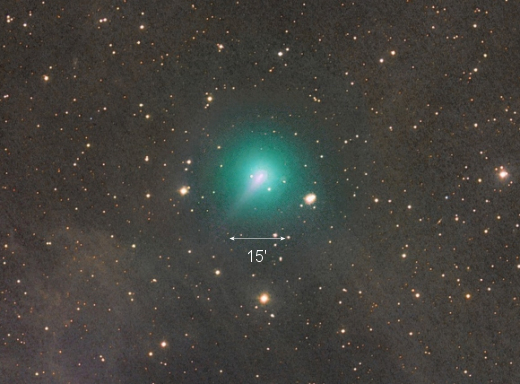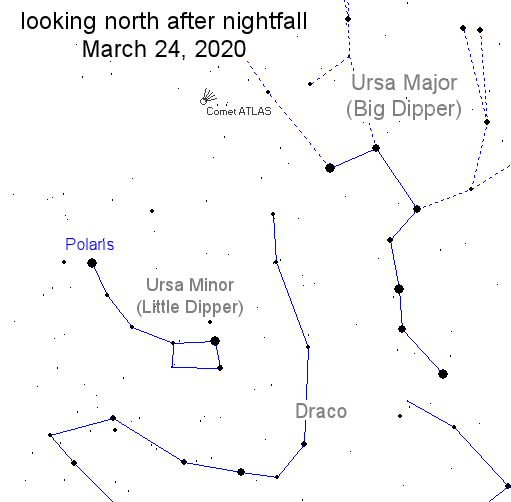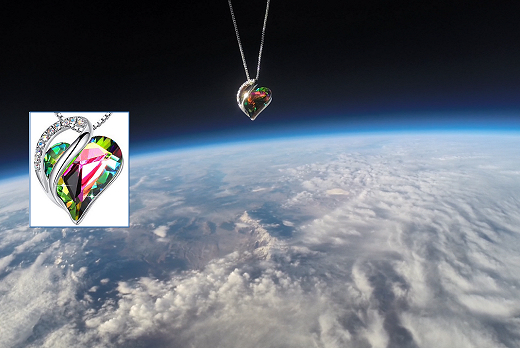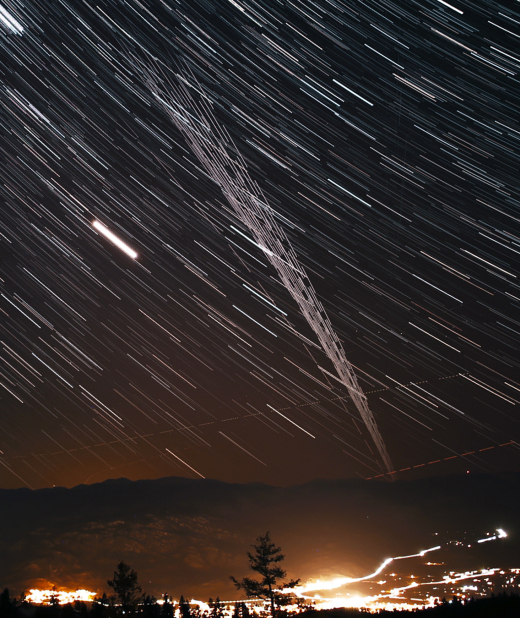 | | | Switch to: Europe, USA, New Zealand, Antarctica Credit: NOAA/Ovation  Planetary K-index Planetary K-index
Now: Kp= 3 quiet
24-hr max: Kp= 3 quiet
explanation | more data
Interplanetary Mag. Field
Btotal: 4.4 nT
Bz: -3.0 nT south
more data: ACE, DSCOVR
Updated: Today at 2346 UT  Coronal Holes: 23 Mar 20 Coronal Holes: 23 Mar 20 
There are no significant coronal holes on the Earthside of the sun. Credit: SDO/AIA  Noctilucent Clouds The southern hemisphere season for noctilucent clouds began on Nov. 15th--the earliest start in recorded history. Check here for daily images from NASA's AIM spacecraft. Switch view: Europe, USA, Asia, Polar Updated at: 03-02-2020 17:55:02 UT Noctilucent Clouds The southern hemisphere season for noctilucent clouds began on Nov. 15th--the earliest start in recorded history. Check here for daily images from NASA's AIM spacecraft. Switch view: Europe, USA, Asia, Polar Updated at: 03-02-2020 17:55:02 UT  SPACE WEATHER
NOAA Forecasts | | Updated at: 2020 Mar 22 2200 UTC FLARE | 0-24 hr | 24-48 hr | CLASS M | 01 % | 01 % | CLASS X | 01 % | 01 % |  Geomagnetic Storms: Geomagnetic Storms:
Probabilities for significant disturbances in Earth's magnetic field are given for three activity levels: active, minor storm, severe storm Updated at: 2020 Mar 22 2200 UTC Mid-latitudes | 0-24 hr | 24-48 hr | ACTIVE | 15 % | 10 % | MINOR | 05 % | 01 % | SEVERE | 01 % | 01 % | High latitudes | 0-24 hr | 24-48 hr | ACTIVE | 15 % | 15 % | MINOR | 25 % | 15 % | SEVERE | 20 % | 10 % | | | |  | | | | | | | | | | | Solar minimum is here - but even now strangely beautiful auroras are dancing around the poles. Deep inside the Arctic Circle, the expert guides of Aurora Holidays in Utsjoki, Finland, can help you chase them. Book now! | | | WHERE DID ALL THE SUNSPOTS GO? So far this year, the sun has been blank--without sunspots--76% of the time. That's verging on the Space Age record set just last year in 2019 when the sun was blank 77% of the time. This means Solar Minimum is still underway despite recent signs of life from the next solar cycle. Stay tuned for more quiet. Aurora alerts: SMS Text.
THE SIZE OF COMET ATLAS: No one knows how big the icy core of Comet ATLAS (C/2019 Y4) might be. Possibly, it's no wider than a few kilometers. One thing's for sure, the comet's atmosphere is huge. New images from amateur astronomers around the world show that ATLAS's gaseous envelope has ballooned in diameter to ~720,000 km--about half as wide as the sun.

"Comet ATLAS's coma (atmosphere) is approximately 15 arcminutes in diameter," reports Michael Jäger of Weißenkirchen, Austria, who took the picture, above, on March 18th. "Its newly-formed tail is about the same size."
Other astronomers are getting similar results. 15 arcminutes equals a quarter of a degree. Given Comet ATLAS's distance of 1.1 AU on March 18th, that angle corresponds to a physical size of 720,000 km.
On the scale of big things in the solar system, Comet ATLAS falls somewhere between the sun (1,392,000 km diameter) and Jupiter (139,820 km). It's not unusual for comets to grow this large. While their icy solid cores are typically mere kilometers in diameter, they can spew prodigious amounts of gas and dust into space, filling enormous volumes with their gossamer exhaust. In the fall of 2007, Comet 17P/Holmes partially exploded and, for a while, had an atmosphere even larger than the sun. The Great Comet of 1811 also had a sun-sized coma. Whether Comet ATLAS will eventually rival those behemoths of the past remains to be seen. 
Right now, Comet ATLAS is certainly the biggest green thing in the Solar System. Its verdant hue comes from diatomic carbon, C2, a common molecule in comets. Gaseous C2 emits a beautiful green glow in the near-vacuum of space. This green color could become visible to the naked eye in mid-April as Comet ATLAS moves closer to Earth and the sun. Stay tuned! Realtime Comet ATLAS Photo Gallery
Free: Spaceweather.com Newsletter
IT CAME FROM SPACE--THE INFINITY PENDANT: Are you looking for a far-out gift? Nothing says "I Love You" like an Infinity Pendant from the edge of space. On Jan. 8, 2020, the students of Earth to Sky Calculus launched a cosmic ray balloon. This authentic Swarovski crystal pendant hitched a ride, traveling 113,209 feet above the Sierra Nevada mountains of central California 
You can have it for $179.95. The students are selling these pendants to support their cosmic ray ballooning program. The glittering heart-shaped crystal is wrapped in a silver-embossed infinity clasp, symbolizing unending love. Each one comes with a romantic card showing the pendant in flight and telling the story of its journey to the edge of space and back again. Far Out Gifts: Earth to Sky Store
All sales support hands-on STEM education STAR TRAILS VS. STARLINK TRAILS: Since the invention of photography, amateur astronomers have enjoyed taking pictures of startrails--long lazy arcs that stars make as they pirouette around the North Celestial Pole. Lately, startrails have competition. Last week, Debra Ceravolo photographed a spray of Starlink satellite trails crisscrossing the real stars over British Columbia: 
"This mess is from just one group of Starlink satellites," says Ceravolo. "Just imagine what it will be like when they launch 20,000+?" Starlink is a new venture by SpaceX. Elon Musk's rocket company plans to launch tens of thousands of satellites, surrounding Earth with transmitters that can bring internet to almost every part of our planet. So far, SpaceX has launched a relatively few 360, a fraction of which appear in Ceravolo's photo. Just imagine, indeed.
Realtime Space Weather Photo Gallery
Free: Spaceweather.com Newsletter Realtime Aurora Photo Gallery
Free: Spaceweather.com Newsletter
Every night, a network of NASA all-sky cameras scans the skies above the United States for meteoritic fireballs. Automated software maintained by NASA's Meteoroid Environment Office calculates their orbits, velocity, penetration depth in Earth's atmosphere and many other characteristics. Daily results are presented here on Spaceweather.com. On Mar. 23, 2020, the network reported 2 fireballs.
(2 sporadics)  In this diagram of the inner solar system, all of the fireball orbits intersect at a single point--Earth. The orbits are color-coded by velocity, from slow (red) to fast (blue). [Larger image] [movies] Potentially Hazardous Asteroids ( PHAs) are space rocks larger than approximately 100m that can come closer to Earth than 0.05 AU. None of the known PHAs is on a collision course with our planet, although astronomers are finding new ones all the time. On March 23, 2020 there were 2018 potentially hazardous asteroids.
 | Recent & Upcoming Earth-asteroid encounters: | Asteroid | Date(UT) | Miss Distance | Velocity (km/s) | Diameter (m) | | 2020 FD | 2020-Mar-18 | 0.7 LD | 15.6 | 11 | | 2020 FH | 2020-Mar-18 | 6.1 LD | 9.4 | 22 | | 2020 FG | 2020-Mar-18 | 1.4 LD | 15 | 9 | | 2020 FW | 2020-Mar-18 | 8.6 LD | 10.2 | 17 | | 2020 EF | 2020-Mar-19 | 16.6 LD | 4.5 | 18 | | 2020 FN | 2020-Mar-19 | 4.7 LD | 6.9 | 11 | | 2020 FA2 | 2020-Mar-19 | 1.4 LD | 8 | 12 | | 2020 FB2 | 2020-Mar-20 | 5.8 LD | 10.9 | 21 | | 2020 FK | 2020-Mar-21 | 3.6 LD | 10.5 | 8 | | 2020 FS | 2020-Mar-21 | 8.2 LD | 4.3 | 10 | | 2020 FM2 | 2020-Mar-22 | 3.3 LD | 9.8 | 19 | | 2020 DP4 | 2020-Mar-22 | 3.5 LD | 8.1 | 33 | | 2020 FL2 | 2020-Mar-22 | 0.4 LD | 20.3 | 20 | | 2020 FF1 | 2020-Mar-22 | 1.9 LD | 12.9 | 11 | | 2020 FF | 2020-Mar-24 | 15.9 LD | 5.6 | 15 | | 2020 FB | 2020-Mar-25 | 8.6 LD | 4.7 | 31 | | 2020 FP | 2020-Mar-27 | 14.7 LD | 9.5 | 24 | | 2012 XA133 | 2020-Mar-27 | 17.4 LD | 23.7 | 235 | | 2020 FE2 | 2020-Mar-28 | 4.5 LD | 7.1 | 27 | | 2010 GD35 | 2020-Mar-29 | 15.3 LD | 12 | 43 | | 2006 FH36 | 2020-Mar-30 | 11.3 LD | 5.1 | 93 | | 2020 FB1 | 2020-Mar-30 | 19.1 LD | 10.5 | 27 | | 2020 FA1 | 2020-Mar-31 | 18.3 LD | 2.2 | 18 | | 2019 GM1 | 2020-Apr-02 | 9 LD | 4.2 | 14 | | 2015 FC35 | 2020-Apr-04 | 10.5 LD | 13.8 | 148 | | 2020 DT3 | 2020-Apr-05 | 17.6 LD | 11.8 | 200 | | 2019 HM | 2020-Apr-10 | 7.2 LD | 3.2 | 23 | | 363599 | 2020-Apr-11 | 19.2 LD | 24.5 | 224 | | 2019 HS2 | 2020-Apr-26 | 13.6 LD | 12.6 | 17 | | 2019 GF1 | 2020-Apr-27 | 18.7 LD | 3.2 | 12 | | 52768 | 2020-Apr-29 | 16.4 LD | 8.7 | 2457 | | 2020 DM4 | 2020-May-01 | 18.4 LD | 6.4 | 163 | | 438908 | 2020-May-07 | 8.9 LD | 12.8 | 282 | | 2016 HP6 | 2020-May-07 | 4.3 LD | 5.7 | 31 | | 388945 | 2020-May-10 | 7.3 LD | 8.8 | 295 | | 2000 KA | 2020-May-12 | 8.9 LD | 13.5 | 162 | | 478784 | 2020-May-15 | 8.5 LD | 3.6 | 28 | | 136795 | 2020-May-21 | 16.1 LD | 11.7 | 892 | Notes: LD means "Lunar Distance." 1 LD = 384,401 km, the distance between Earth and the Moon. 1 LD also equals 0.00256 AU. MAG is the visual magnitude of the asteroid on the date of closest approach. | | Cosmic Rays in the Atmosphere | SOMETHING NEW! We have developed a new predictive model of aviation radiation. It's called E-RAD--short for Empirical RADiation model. We are constantly flying radiation sensors onboard airplanes over the US and and around the world, so far collecting more than 22,000 gps-tagged radiation measurements. Using this unique dataset, we can predict the dosage on any flight over the USA with an error no worse than 15%. E-RAD lets us do something new: Every day we monitor approximately 1400 flights criss-crossing the 10 busiest routes in the continental USA. Typically, this includes more than 80,000 passengers per day. E-RAD calculates the radiation exposure for every single flight. The Hot Flights Table is a daily summary of these calculations. It shows the 5 charter flights with the highest dose rates; the 5 commercial flights with the highest dose rates; 5 commercial flights with near-average dose rates; and the 5 commercial flights with the lowest dose rates. Passengers typically experience dose rates that are 20 to 70 times higher than natural radiation at sea level. To measure radiation on airplanes, we use the same sensors we fly to the stratosphere onboard Earth to Sky Calculus cosmic ray balloons: neutron bubble chambers and X-ray/gamma-ray Geiger tubes sensitive to energies between 10 keV and 20 MeV. These energies span the range of medical X-ray machines and airport security scanners. Column definitions: (1) The flight number; (2) The maximum dose rate during the flight, expressed in units of natural radiation at sea level; (3) The maximum altitude of the plane in feet above sea level; (4) Departure city; (5) Arrival city; (6) Duration of the flight. SPACE WEATHER BALLOON DATA: Approximately once a week, Spaceweather.com and the students of Earth to Sky Calculus fly space weather balloons to the stratosphere over California. These balloons are equipped with radiation sensors that detect cosmic rays, a surprisingly "down to Earth" form of space weather. Cosmic rays can seed clouds, trigger lightning, and penetrate commercial airplanes. Furthermore, there are studies ( #1, #2, #3, #4) linking cosmic rays with cardiac arrhythmias and sudden cardiac death in the general population. Our latest measurements show that cosmic rays are intensifying, with an increase of more than 18% since 2015: 
The data points in the graph above correspond to the peak of the Regener-Pfotzer maximum, which lies about 67,000 feet above central California. When cosmic rays crash into Earth's atmosphere, they produce a spray of secondary particles that is most intense at the entrance to the stratosphere. Physicists Eric Reneger and Georg Pfotzer discovered the maximum using balloons in the 1930s and it is what we are measuring today. En route to the stratosphere, our sensors also pass through aviation altitudes: 
In this plot, dose rates are expessed as multiples of sea level. For instance, we see that boarding a plane that flies at 25,000 feet exposes passengers to dose rates ~10x higher than sea level. At 40,000 feet, the multiplier is closer to 50x. The radiation sensors onboard our helium balloons detect X-rays and gamma-rays in the energy range 10 keV to 20 MeV. These energies span the range of medical X-ray machines and airport security scanners. Why are cosmic rays intensifying? The main reason is the sun. Solar storm clouds such as coronal mass ejections (CMEs) sweep aside cosmic rays when they pass by Earth. During Solar Maximum, CMEs are abundant and cosmic rays are held at bay. Now, however, the solar cycle is swinging toward Solar Minimum, allowing cosmic rays to return. Another reason could be the weakening of Earth's magnetic field, which helps protect us from deep-space radiation. | | The official U.S. government space weather bureau | | | The first place to look for information about sundogs, pillars, rainbows and related phenomena. | | | Researchers call it a "Hubble for the sun." SDO is the most advanced solar observatory ever. | | | 3D views of the sun from NASA's Solar and Terrestrial Relations Observatory | | | Realtime and archival images of the Sun from SOHO. | | | from the NOAA Space Environment Center | | | fun to read, but should be taken with a grain of salt! Forecasts looking ahead more than a few days are often wrong. | | | from the NOAA Space Environment Center | | | the underlying science of space weather |  | To find reviews of new online casino sites in the UK try The Casino DB where there are hundreds of online casino reviews complete with bonuses and ratings. Get a bonus when playing at a new casino in the UK. The Genie got you covered! Looking for a new online casino? Try Casimpo the new site dedicated to making online casino simple and easy for all. | | | These links help Spaceweather.com stay online. Thank you to our supporters! | | | | | | | | |  | |  |   | ©2019 Spaceweather.com. All rights reserved. This site is penned daily by Dr. Tony Phillips. | |

